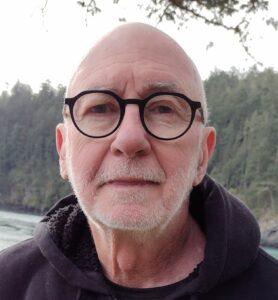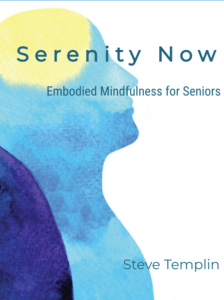As a highly sensitive person, you have the capacity to experience yourself and your body as part of the quantum universe, connected to new possibilities for healing and wholeness.
Like me, you likely don’t know the math needed to appreciate the quantum universe, but you do have a body that functions as a quantum sensor, in fact a highly sensitive sensor, that allows you to experience the quantum field directly.
“Your physically felt body is, in fact, part of a gigantic system of here and other places, now and other times, you and other people, in fact, the whole universe. This sense of being bodily alive in a vast system is the body as it is felt from inside.”
Eugene T. Gendlin, Ph.D. Author of Focusing
Said another way, when you get out of your head and connect with the felt wisdom of your body you open yourself to a vast set of new possibilities.
This is easier said than done. Many of us, especially the highly sensitive, have learned to turn down the volume on our felt awareness as a form of emotional protection. Our body’s unconscious programming is the less we feel the less we suffer. However, this is an outdated survival program.
It’s our connection to our body and feelings that is the foundation of our self-regulating, or self-healing, capacity. So, to the degree we protect ourselves from emotional pain, we’re also limiting our potential for aliveness, joy, and vitality.
Connecting Safely as Felt Space
Learning to experience the body as space, as the experience of three-dimensional space, is a tested path for consciousness to return to the body safely. The experience of safety begins to neutralize the outdated survival stategies that cause us so much discomfort.
For example, if I have an emotional pain in my body, such as shame or sadness, it’s likely that I’ll tend to avoid it. I may unconsciously deny its existence, or if I do feel it, I may do my best to avoid it by any number of distracting habits or addictions.
On the other hand, if I’m curious, I may notice that the emotional discomfort occupies a space about the size of a personal pizza and that it feels rather warm, but somehow feels dense and heavy. The felt experience may be accompanied by imagery, memories, or other sights and sounds as if the body, the quantum body, is telling stories …. because someone is listening.
Neurologically, as these stories unfold, brainwaves tend to slow down, while the autonomic nervous system (ANS) becomes more orderly. So the stories, as told through a flow of symbols isn’t random but is meaningful. The neurological changes can be validated by a variety of neurofeedback methods, but most importantly by a subjective sense of growing ease.
I suspect that as we shift from a left-brain thinking orientation to a more right-brain sensing or feeling mode, we’re in fact integrating the brain and nervous system on deeper levels and opening ourselves to new opportunities for healing.
I’ve found that it’s been very helpful to me and to my clients to know that doing nothing other than thinking less and sensing more produces significant neurological shifts. And when these shifts are practiced regularly we’re actually changing the structure of the brain to influence our emotional and physical health in profound ways.
Let’s Practice Feeling Space
All of the following exercises produce the beneficial neurological shifts mentioned above. As our biology shifts more and more through practice we begin to heal … on all levels.
Exercise One: Close your eyes and bring attention to your hands. Notice for ‘something’ that lets you know that even with your eyes closed you have hands. Let’s call that something a sensation. Just let that sensation take up space in your awareness. There’s nothing to judge, to know, no problem to solve. Simply notice your hands. Notice how you feel and pause. Your brain is already changing.
Exercise Two: Close your eyes and once again bring attention to your hands. Be aware that your hands occupy three-dimensional physical space. Notice how that space feels in terms of sensations, tingles, vibrations, warmth, coolness, heaviness, or ‘something’. Just notice …. while you’re aware of breathing VERY SLOWLY and GENTLY. Breathing slowly, about five seconds in and five out, is neurologically enhancing. Notice how you feel and pause. The awareness of space supports the right brain shift and overall neurological balance.
Exercise Three: Close your eyes (note: with practice it will no longer be necessary to close your eyes. You’ll be able to practice these self-regulating exercises anywhere, even in the midst of activity). Once again, become aware of your hands …. notice the sensations that occupy three-dimentional space …. and then slowly (over ten seconds or so) make a fist and hold it for another twenty seconds …. noticing the effort required to make a fist. And then, slowly release and open your closed fist. Notice how the sensations are now somewhat different. While you’re noticing the difference take another slow breath or two, and then sigh. Notice how you feel. This exercise helps us learn to let go.
These exercises are just a small sampling of simple, safe, and brief practices that you can use to nurture a deeper connection with yourself and your possibilities.
Regular practice, seconds or minutes at a time repeated throughout the day, has a cumulative effect on changing your neural structures. As your brain and ASN change so will your physical and emotional experience.


 Steve is a retired Doctor of Oriental Medicine, Acupuncture Physician, and HeartMath Trauma-Sensitive Certified Practitioner with over 35 years of clinical experience in the fields of Energy Medicine, Energy Psychology, and Biofeedback.
Steve is a retired Doctor of Oriental Medicine, Acupuncture Physician, and HeartMath Trauma-Sensitive Certified Practitioner with over 35 years of clinical experience in the fields of Energy Medicine, Energy Psychology, and Biofeedback. 